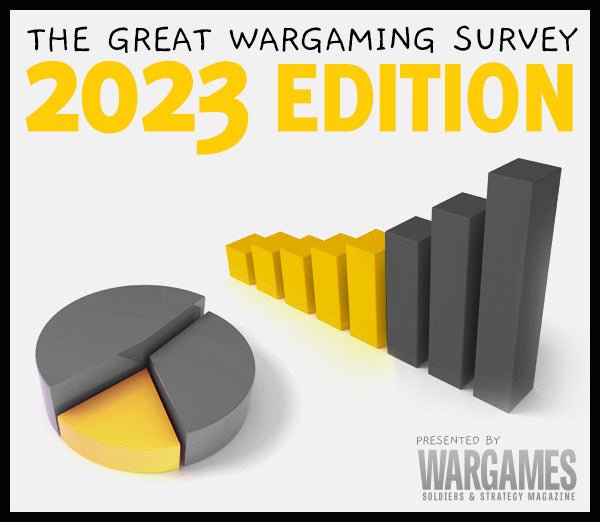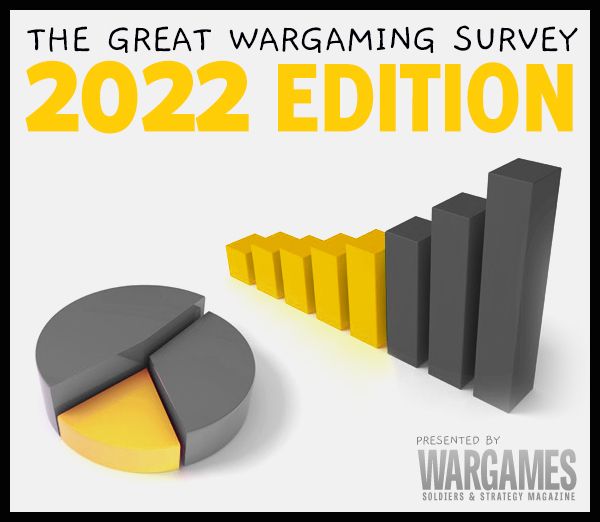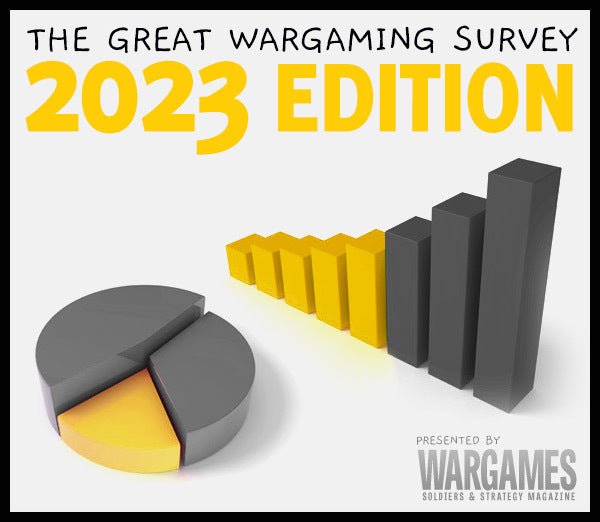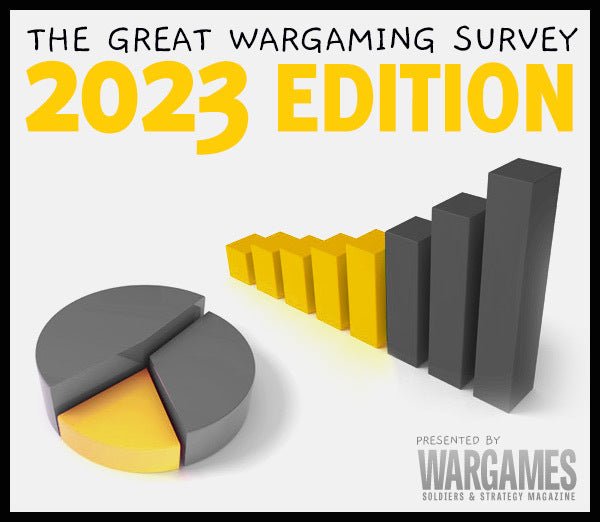GWS 2022: A look at group size
By Jon Freitag
One question from the 2022 Great Wargaming Survey asked about group size. Specifically, the question asked what size of group one gamed with in the past year.
Now, being one susceptible to reading into a question more than intended, I had to stop and think about this question. Since I actively participate in more than one group including many one-on-one contests, this question raised more questions. Which group's headcount do I use as a response? Do gamers typically game with multiple groups throughout the year or do they stick to one core group? Do I take the headcount for one group or an average of several groups? Do I total all of the distinct gamers from all of my 2022 games? Perhaps no one else faced this conundrum in answering the question. Next year, the question may need some clarification. Until then, let us forge ahead with a look at the survey responses relating to group size and its association to some of the other survey attributes.
First, the table below shows the tabulation of counts by Group Size. Almost 13% of respondents identify as primarily solo gamers. Given my own experience and preferences, I figured this percentage might be higher. Since gaming and hanging out with friends are always at the top of the list for the best part of wargaming, I suppose the low solo response should not surprise. The largest segment of the population (45%) claims that its group has between one to four other participants.
Can any insights or tendencies be gained by examining Group Size from only a handful of attributes? A few of my favorites are highlighted below.
Age Group
With the exception of the often under-surveyed 20 and Under cohort, solo gaming tends to increase with age as small group size (1-4 others) tends to shrink. Almost 21% of the 61+ age group primarily games solo. At the lower end of Group Size, does solo gaming crowd out small group participation?
Primary Game Venue Choice
There are several interesting observations when Group Size is cross-tabulated with Game Venue.
First, clubs have a tendency to host larger groups than do game stores. From the survey, about 20% of clubs see groups above 16 gamers. Second, when gaming at either home or a friend's, group size is dominated by the 1-4 category. Private homes seem to be the domain of small gaming circles.
Gaming Frequency
Ignoring the More than once a week gamer, for now, as gaming frequency falls so does group size. With little or no gaming, there seems to be a very tenuous connection to groups. For the infrequent gamer playing less than quarterly, 44% of play is solo and 46% is in groups of 1-4. The More than once a week gamer tends to run in bigger gaming circles but still finds time for solo play.
Primary Interest
When examining Group Size by Primary Interest, Fantasy/Sci-Fi gamers show a similar pattern to the Mixed category of gamers. The distinguishing feature between these two groups and Historical wargamers is that Historical wargamers prefer solo games almost two to one.
Remote Gaming
Given the social interaction required for remote gaming, gamers playing remotely tend to game in larger groups than their counterpart. Solo gaming is less than half for those gaming remotely.
Years Spent Wargaming
Finally, a look at a gamer's duration in the hobby suggests that the percentage of gamers remaining in small groups (1-4 others) decreases over time. Excluding solo play, group size tends to increase as the years go by.
A look at group size offered up some interesting and unexpected tendencies and insights. I'll leave an exploration of these attribute interactions for another time.
What do you suppose some of these interactions might show?
In the selection of charts above, do any particular results draw your attention and prompt reflection on your own gaming experience?
Food for Thought
As we march toward and into retirement, the survey suggests that gaming group size tends to shrink and solo gaming increases as we age. Similarly, solo gaming tends to increase and group size shrinks as gaming frequency decreases. For the Historical gamer, this is especially true. Are these natural tendencies? If remote gaming offers a possibility to reduce solo gaming and increase group size (and perhaps gaming frequency) then remote gaming may warrant further investigation as a means to reconnect with like-minded gamers and overcome this downward spiral.








2 comments
Hi Brent – the graphs should now be clickable for a larger version.
Hi. Interesting reflection of the numbers. The graphs are almost too small for me to read, and my eyes are fine. I tried magnifying the page, but the images are static. I imagine folks with poor eyesight are finding them frustrating.